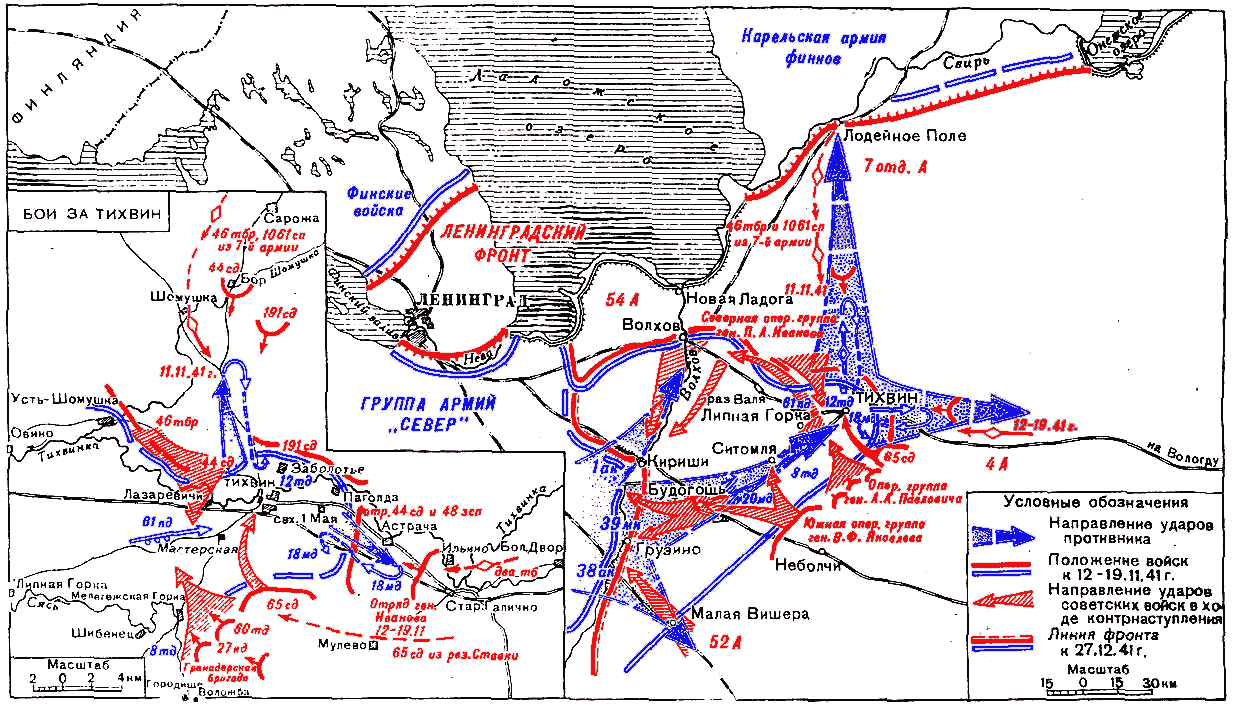Deleted member 1487
Based on my last post in this thread:
https://www.alternatehistory.com/forum/threads/operation-nordlicht-instead-of-störfang.398497/page-4
It would seem that the Tikhvin Operation of 1941 was a major blunder beyond it's unsustainability that put Army Group North in a really bad situation, it also missed the chance to cut the Road of Life that helped Leningrad survive the winter of 1941-42.
https://en.wikipedia.org/wiki/Road_of_Life
http://encyclopedia2.thefreedictionary.com/Tikhvin+Defensive+Operation+of+1941

It would seem that given the depth of penetration of 18th army against Tikhvin, had it instead kept to the West Bank of the Volkhov river it would have been a far more sustainable situation that would have destroyed the Soviet 54th army as well as cut off the Road of Life supply route to Leningrad. Plus it would give the 18th army a defensible terrain feature to anchor their position on, not travel as far, and a better front density of troops to hold the line. Then Leningrad would fall over the winter, probably no later than January 1942 due to lack of supplies. That would then free up the rest of 18th army screening the city and the Oranienbaum bridgehead for other Operations and remove about 2.5 million Soviets from Stalin's control, plus of course the KV factory in Leningrad. Come Summer after repairs Leningrad would be a supply base for AG-North and air base, while Finnish troops freed up could then attack Murmansk and the rail road in Spring/Summer.
The German 11th army would likely then never head north at all and at most go to AG-Center to conduct Operation Wirbelwind near the Rzhev salient.
Was what I'm suggesting even possible in late 1941 or am I missing something? What would the knock on effects have been come 1942 with Leningrad surrendering over the Winter? How would Stalin react, what political impact with the Wallies would it have if then Murmansk fell in Spring/Summer, while then the situation with AG-Center and South are changed? Demyansk too would probably get some operations to widen it's supply lines come Summer and might be used as a springboard to try and cut off the bulge between it and Rzehv, or at least the rail lines supplying it. Could this force the hand of the Wallies to launch Operation Roundhammer in Spring 1943?
https://www.alternatehistory.com/forum/threads/operation-nordlicht-instead-of-störfang.398497/page-4
It would seem that the Tikhvin Operation of 1941 was a major blunder beyond it's unsustainability that put Army Group North in a really bad situation, it also missed the chance to cut the Road of Life that helped Leningrad survive the winter of 1941-42.
https://en.wikipedia.org/wiki/Road_of_Life
http://encyclopedia2.thefreedictionary.com/Tikhvin+Defensive+Operation+of+1941

It would seem that given the depth of penetration of 18th army against Tikhvin, had it instead kept to the West Bank of the Volkhov river it would have been a far more sustainable situation that would have destroyed the Soviet 54th army as well as cut off the Road of Life supply route to Leningrad. Plus it would give the 18th army a defensible terrain feature to anchor their position on, not travel as far, and a better front density of troops to hold the line. Then Leningrad would fall over the winter, probably no later than January 1942 due to lack of supplies. That would then free up the rest of 18th army screening the city and the Oranienbaum bridgehead for other Operations and remove about 2.5 million Soviets from Stalin's control, plus of course the KV factory in Leningrad. Come Summer after repairs Leningrad would be a supply base for AG-North and air base, while Finnish troops freed up could then attack Murmansk and the rail road in Spring/Summer.
The German 11th army would likely then never head north at all and at most go to AG-Center to conduct Operation Wirbelwind near the Rzhev salient.
Was what I'm suggesting even possible in late 1941 or am I missing something? What would the knock on effects have been come 1942 with Leningrad surrendering over the Winter? How would Stalin react, what political impact with the Wallies would it have if then Murmansk fell in Spring/Summer, while then the situation with AG-Center and South are changed? Demyansk too would probably get some operations to widen it's supply lines come Summer and might be used as a springboard to try and cut off the bulge between it and Rzehv, or at least the rail lines supplying it. Could this force the hand of the Wallies to launch Operation Roundhammer in Spring 1943?
